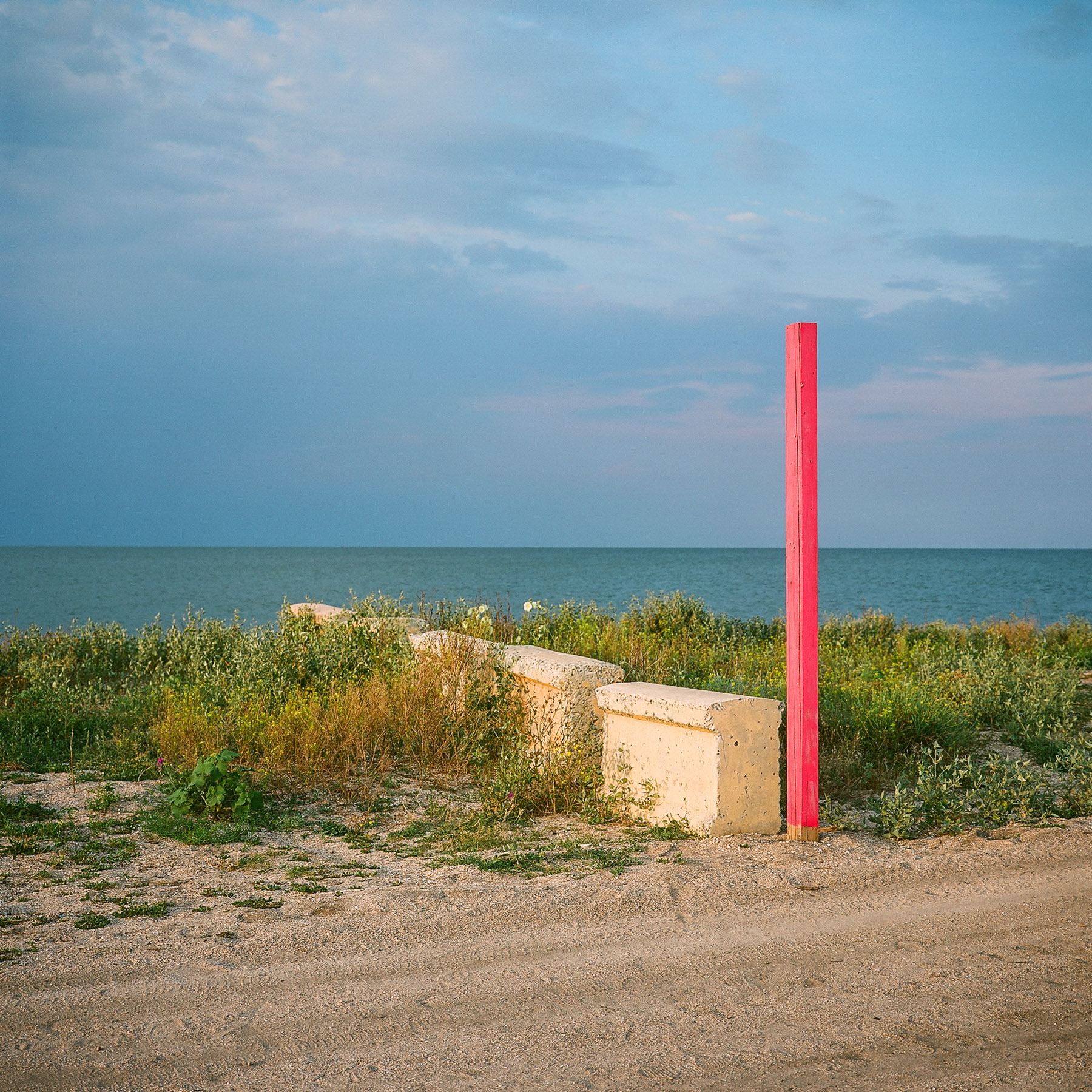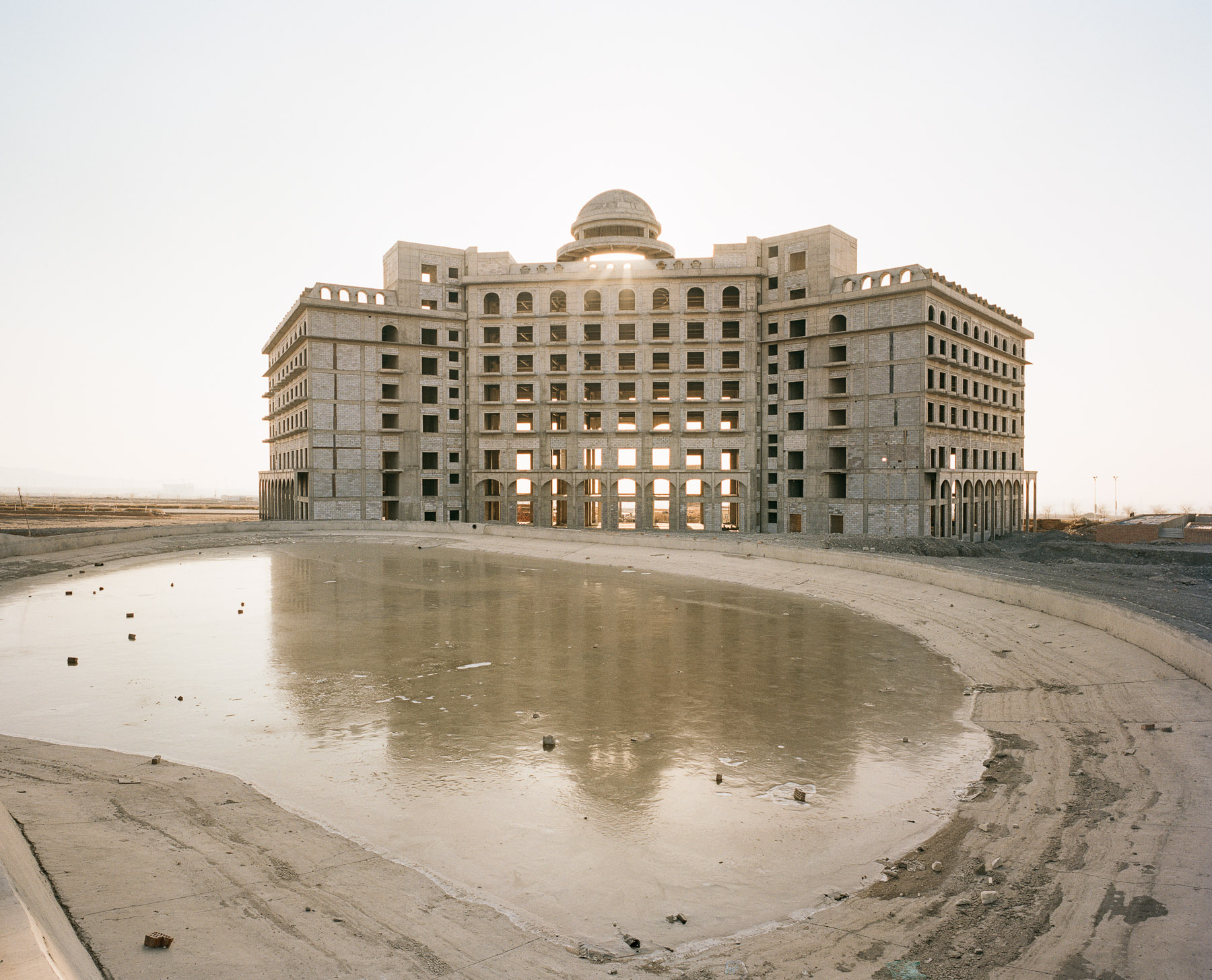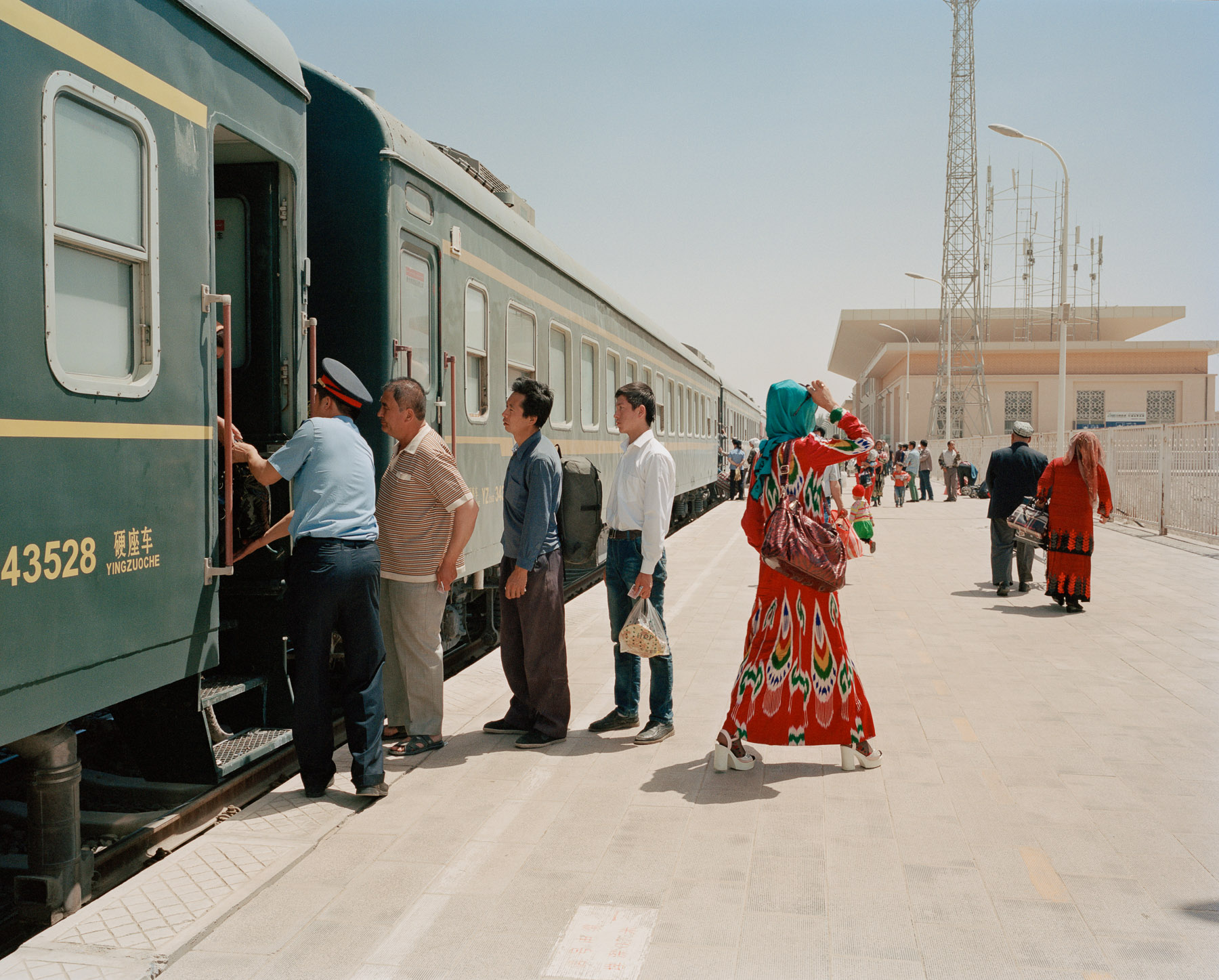
July 2019. Dolzhanskaya spit, Krasnodar Krai, Russia. On the Sea of Azov

July 2019. Dolzhanskaya spit, Krasnodar Krai, Russia. On the Sea of Azov

July 2019. Dolzhanskaya spit, Krasnodar Krai, Russia. On the Sea of Azov

December 2016. Xinjiang province, China. Communist monument in Xinjiang on the road G312 to Hami (also called Kumul) driving from Gansu province. Xinjiang is the westernmost province in all China, located at the border of Central Asian countries, Russia and Mongolia. More than twice the size of France, it has only 22 million inhabitants, a majority of which are the indigenous Uighurs, a sunni-muslim Turkic ethnic group which has lived in the region for centuries. Tensions have nonetheless arisen in the last decade as a consequence of the en-masse migration of Han Chinese settlers and confessional persecution by the strongly secular governmental authorities. Borrowing from romanticized notions of the American frontier, synonymous with ideals of exploration and expansion, photographer Patrick Wack captures a visual narrative of China’s westernmost region—Xinjiang. Whereas the American West conjures images of cowboys and pioneers, of manifest destiny and individualistic freedom, the Chinese West has not yet been so defined. It is a place of pluralities—of haunting, expansive landscapes, of rough mountains and vivid lakes, of new construction and oil fields, of abandoned structures in decaying towns, of devout faith and calls to prayer, of silence and maligned minorities, of opportunity and uncertain futures. It is a land of shifting identity. In essence, Xinjiang is the new frontier to be conquered and pondered. Literally translating to “new frontier” in Chinese, Xinjiang is a land apart, and has been so for centuries. More than twice the land area of France with a population less than the city of Shanghai, the Chinese province of Xinjiang once connected China to Central Asia and Europe as the first leg of the ancient Silk Road. Yet it remains physically, culturally, and politically distinct, an otherness within modern China. Its infinite sense of space; its flowing Arabic scripts and mosque-filled cityscapes; its designation as an autonomous region; and si

December 2016. Xinjiang province, China. Senior technician from a Chinese state-owned oil company taking a cigarette break after lunch near one of the team's vehicle. He is part of an oil exploration team from a Chinese state-owned company operating in the Taklamakan desert in the province of Xinjiang. This team and a few others are setting up thousands of explosive charges for weeks at a time that are all detonated at sthe same time to detect oil fields. Company is CNPC, China National Petroleum Corporation. Xinjiang is the westernmost province in all China, located at the border of Central Asian countries, Russia and Mongolia. More than twice the size of France, it has only 22 million inhabitants, a majority of which are the indigenous Uighurs, a sunni-muslim Turkic ethnic group which has lived in the region for centuries. Tensions have nonetheless arisen in the last decade as a consequence of the en-masse migration of Han Chinese settlers and confessional persecution by the strongly secular governmental authorities. Borrowing from romanticized notions of the American frontier, synonymous with ideals of exploration and expansion, photographer Patrick Wack captures a visual narrative of China’s westernmost region—Xinjiang. Whereas the American West conjures images of cowboys and pioneers, of manifest destiny and individualistic freedom, the Chinese West has not yet been so defined. It is a place of pluralities—of haunting, expansive landscapes, of rough mountains and vivid lakes, of new construction and oil fields, of abandoned structures in decaying towns, of devout faith and calls to prayer, of silence and maligned minorities, of opportunity and uncertain futures. It is a land of shifting identity. In essence, Xinjiang is the new frontier to be conquered and pondered. Literally translating to “new frontier” in Chinese, Xinjiang is a land apart, and has been so for centuries. More than twice the land area of France with a population less than the city

December 2016. Xinjiang province, China. Half constructed and decaying palace hotel in the new development zone of the city of Turpan in Xinjiang.

June 2016. Xinjiang province, China. A Han Chinese migrant worker fishing in a small lake in the outskirts of Turpan. In the background, a typical item of China's fast developping West, a half-built half-decaying palace or government building.

May 2016. Xinjiang province, China. Travellers getting on and off the train to Hotan at the Kashgar railway station. This is the only railway linking the oasis towns south of the Taklamakan desert where most of Xinjiang's Uighur community in Xinjiang lives. Xinjiang is the westernmost province in all China, located at the border of Central Asian countries, Russia and Mongolia. More than twice the size of France, it has only 22 million inhabitants, a majority of which are the indigenous Uighurs, a sunni-muslim Turkic ethnic group which has lived in the region for centuries. Tensions have nonetheless arisen in the last decade as a consequence of the en-masse migration of Han Chinese settlers and confessional persecution by the strongly secular governmental authorities.

May 2017. Xinjiang province, China. Han Chinese migrant worker from the East of China making a call overlooking new constructions in Altay, a county-level city in Ili Kazakh Autonomous Prefecture, in far northern Xinjiang, China. It is the administrative centre of Altay Prefecture, and has 142,000 inhabitants. Xinjiang is the westernmost province in all China, located at the border of Central Asian countries, Russia and Mongolia. More than twice the size of France, it has only 22 million inhabitants, a majority of which are the indigenous Uighurs, a sunni-muslim Turkic ethnic group which has lived in the region for centuries. Tensions have nonetheless arisen in the last decade as a consequence of the en-masse migration of Han Chinese settlers and confessional persecution by the strongly secular governmental authorities. Borrowing from romanticized notions of the American frontier, synonymous with ideals of exploration and expansion, photographer Patrick Wack captures a visual narrative of China’s westernmost region—Xinjiang. Whereas the American West conjures images of cowboys and pioneers, of manifest destiny and individualistic freedom, the Chinese West has not yet been so defined. It is a place of pluralities—of haunting, expansive landscapes, of rough mountains and vivid lakes, of new construction and oil fields, of abandoned structures in decaying towns, of devout faith and calls to prayer, of silence and maligned minorities, of opportunity and uncertain futures. It is a land of shifting identity. In essence, Xinjiang is the new frontier to be conquered and pondered. Literally translating to “new frontier” in Chinese, Xinjiang is a land apart, and has been so for centuries. More than twice the land area of France with a population less than the city of Shanghai, the Chinese province of Xinjiang once connected China to Central Asia and Europe as the first leg of the ancient Silk Road. Yet it remains physically, culturally, and politically distinct, a

May 2012. Tibet province, China. Portrait of Zhaxi Dorje, 20 years old, Tibetan caterpillard fungus picker near the Shola Pass basecamp at 4470m high.

Chongqing, China. 2013. Yi Jia Lin, professional player of Shakuhachi, playing his instrument somewhere in the Nan'An district of Chongqing. Chongqing is a major city in the Southwest of China and one of the five national central cities in the PRC. It is one of PRC's four direct-controlled municipalities and was created as such in 1997. It has a population of 28 million people althogh only seven million are considered to be urban. It is considered the capital of the belly of China and has seen very rapid growth over the past ten years.













